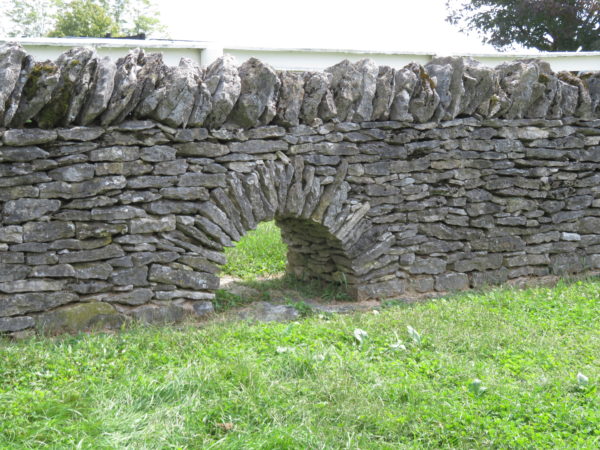September 16, 2017
In 1961, a non-profit organization was formed to preserve Shaker Village of Pleasant Hill which had been settled in 1805 and was active until 1910. On its 3000 acres is the country’s largest private collection of 19th century buildings. [There are 34.] Staff offer presentations on preservation, the working farm, and Shaker music. Facilities for visitors include a restaurant and overnight accommodations. Riverboat rides, hayrides, and wagon rides are available.
Shakers believed they were living in the last millennium and that they should live as if they were angels on earth. Gender and racial equality were intrinsic. All people shared a brother-sister relationship and there was no need for procreation: The community would grow as people moved into the community. The village was arranged into three families each with dormitory-style living quarters, work buildings, and farms.
Worship was focused on an individual’s personal manifestation of the spirit and might include trances, violent body movements, shaking, and shouting. The name Shakers came from descriptions of worship practices. Because movement and dancing were an integral part of worship, the meeting house was structured with an open meeting room, two sets of trusses and brick pillars in the basement.
Residents supported themselves selling produce, seeds, brooms, and preserves (over 10 tons one year).
The property contained over 40 miles of dry stone fences which took 12 years to construct and cost $40,000. The cost for building the same fences today is estimated at $11 million. We saw dry stone fences throughout this part of Kentucky and were happy we were able to attend a presentation about how they are constructed. Original fences are plentiful on the property, but trainees built the demonstration fences we saw in the presentation.
Dry stone fences are made without mortar. Two sides (think of the front and the back) of the wall start several feet apart at the base, angling inward until they meet at the top and are capped with flat or triangular coping. Tie stones go through both sides of the wall to add strength and stability.
Openings allow things (people, water, animals) to move through.
Stiles are steps built into a wall.















1 Comment
Laura · November 12, 2017 at 6:12 am
Love those fences!